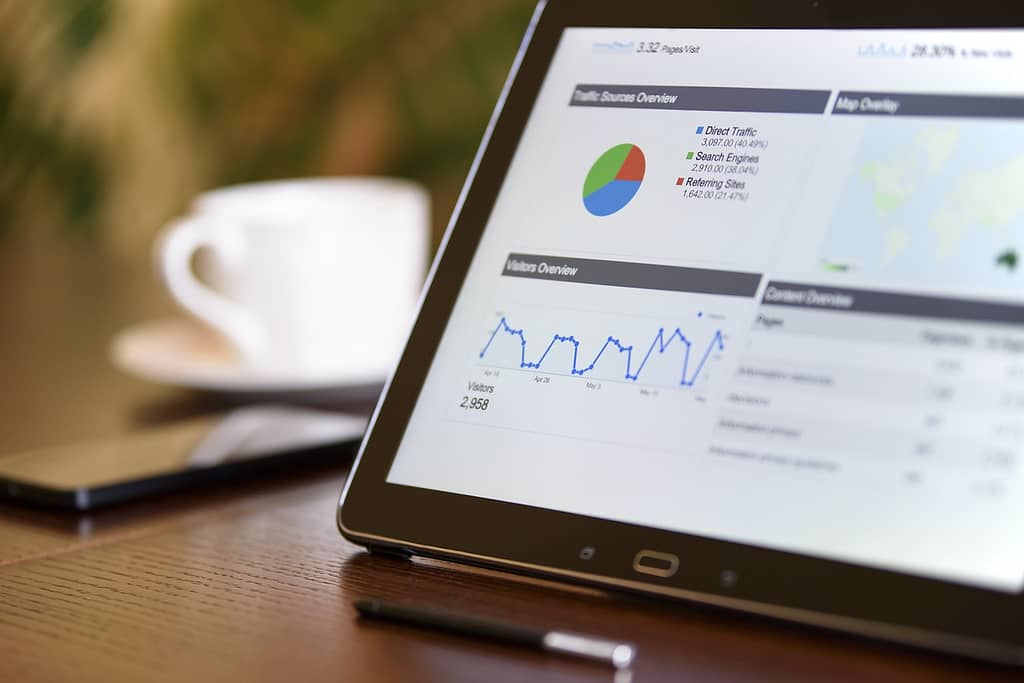All you need to know if you’re going to monetize your blog
If you’re passionate about blogging and wondering how you can turn your hobby into a profitable venture, you’re in the right place.
When I first started my blog, I had no idea that it could eventually become a significant source of income. The journey from a casual blogger to a monetized one is thrilling, filled with learning and growth.
In this article, I’ll share everything I’ve learned about monetizing a blog, from different strategies to common pitfalls.
Whether you’re just starting out or looking to take your blog to the next level, these insights will help you navigate the monetization maze and unlock your blog’s potential. Let’s dive in!
Different Ways to Monetize Your Blog
Monetizing a blog isn’t a one-size-fits-all situation. There are several strategies you can use, depending on your blog’s niche, audience, and your personal preferences.
Here are some of the most effective methods I’ve tried…

1. Affiliate Marketing
Affiliate marketing is one of the easiest ways to start monetizing your blog. Essentially, you promote products or services on your blog, and when someone makes a purchase through your referral link, you earn a commission.
When I started, I signed up for Amazon Associates, one of the most popular affiliate programs. It’s simple to use, and you can find products related to almost any niche. For example, if you run a tech blog, you can promote gadgets and earn a commission on each sale.
Other popular affiliate networks include ShareASale, CJ Affiliate, and Rakuten Marketing.
The key to success with affiliate marketing is to promote products that are relevant to your audience and to provide honest reviews and recommendations. Your readers will trust you more if they know you’re providing genuine advice.
2. Advertising
Another common monetization strategy is displaying ads on your blog. Google AdSense is a popular ad network that places ads on your site and pays you based on clicks or impressions. It’s easy to set up and can generate a steady stream of income once you have enough traffic.
However, it’s important not to overload your site with ads. Too many ads can slow down your site and frustrate your readers. I found a balance by placing ads in strategic locations where they were visible but not intrusive.
3. Sponsored Posts
As your blog grows, you may get opportunities to write sponsored posts. Companies will pay you to write a post that promotes their product or service.
This can be quite lucrative, especially if you work with brands that align with your blog’s niche.
For example, I once collaborated with a software company to write a detailed review of their product. Not only did I get paid for the post, but I also received a free product to use.
Just remember to disclose any sponsored content to your readers to maintain transparency and comply with legal requirements.
4. Selling Digital Products
Creating and selling your own digital products can be a great way to monetize your blog. Ebooks, online courses, and webinars are popular options.
When I wrote my first ebook, I was surprised at how well it sold. It was based on a series of popular blog posts, so I knew there was an audience for it.
Online courses can also be very profitable. You can repurpose your most popular content into a comprehensive course and charge for access. Platforms like Teachable and Udemy make it easy to create and sell courses.
5. Membership Sites
Turning your blog into a membership site can provide a recurring revenue stream.
Offer exclusive content, such as in-depth articles, videos, or a private community, to paying members. This model works well if you have a loyal audience willing to pay for premium content.
I use a plugin called MemberPress to manage my membership site. It allows me to create different membership levels and restrict access to premium content. The recurring revenue from memberships has been a game-changer for my blog.

Tools and Platforms for Blog Monetization
When it comes to monetizing your blog, choosing the right tools and platforms can make a significant difference in your success.
These tools not only streamline the process but also maximize your potential earnings. Here are some key categories and top choices within each…
Affiliate Networks
- Amazon Associates: Amazon’s affiliate program is ideal for bloggers due to its vast product range. You can promote almost anything and earn a commission on sales.
- ShareASale: This network connects bloggers with a wide variety of merchants, offering numerous products to promote across different niches.
- CJ Affiliate (formerly Commission Junction): CJ Affiliate is known for its extensive network of advertisers and advanced tracking tools, making it easier to manage and optimize your campaigns.
Ad Networks
- Google AdSense: Google AdSense is a beginner-friendly ad network that places relevant ads on your blog. It’s easy to set up and offers reliable payouts.
- Media.net: Media.net, powered by Yahoo and Bing, is another excellent ad network. It provides high-quality ads and works well for blogs with substantial traffic from the U.S. and U.K.
E-commerce Platforms
- Shopify: Shopify is a comprehensive e-commerce solution that allows you to create an online store with ease. It’s perfect for bloggers looking to sell physical products, digital downloads, or even services.
- WooCommerce: WooCommerce is a WordPress plugin that turns your blog into a full-fledged e-commerce site. It’s highly customizable and integrates seamlessly with your existing WordPress site.
Membership Management
- MemberPress: MemberPress is a WordPress plugin that makes it easy to set up a membership site. It offers features like content dripping, access control, and payment gateways, helping you manage subscriptions and protect your content.
- Patreon: Patreon is a platform that allows creators to earn recurring revenue from their supporters. It’s ideal for bloggers who want to offer premium content, behind-the-scenes access, or other exclusive perks to their most loyal fans.

Traffic Requirements
One of the biggest questions I had when I started was how much traffic I needed before I could start monetizing.
Understanding traffic requirements is crucial for monetizing your blog. While you can start earning with minimal traffic by selling digital products or offering services, methods like affiliate marketing and advertising require a larger audience to generate significant income.
Affiliate marketing and display advertising depend on high traffic. More visitors mean more clicks and purchases, leading to higher earnings.
When I started, I focused on creating high-quality content, optimizing for SEO, and promoting through social media. Platforms like Facebook, X(Twitter), and Pinterest can drive significant traffic. Engaging with your audience through comments and feedback is key to retention.
Tools like Google Analytics help track traffic and understand audience behavior, enabling you to refine your strategy. Building a substantial audience takes time, so consistently produce valuable content and promote it effectively. With patience and persistence, you’ll achieve the traffic levels needed for successful monetization.

Legal and Financial Considerations
Before monetizing your blog, understanding the legal and financial aspects is crucial.
Disclosure Requirements
The FTC requires bloggers to disclose affiliate relationships and sponsored content. This transparency maintains trust with your audience and ensures compliance.
Disclosures should be clear and included where affiliate links or sponsored mentions appear. For example, state, “This post contains affiliate links. If you make a purchase through these links, I may earn a commission at no additional cost to you.” Regularly update your disclaimers to reflect changes in monetization practices.
Taxes
Monetizing your blog has tax implications. Income from your blog is taxable, so keep detailed records of earnings and expenses.
Different monetization methods, like affiliate marketing, ad revenue, or selling products, have varying tax implications.
Consult with a tax professional to understand your obligations, including estimated tax payments, business expense deductions, and filing requirements.
Setting aside a portion of your earnings for taxes can prevent financial surprises.
Business Structure and Licensing
Consider the legal structure of your blogging business. Options include sole proprietorship, partnership, LLC, or corporation, each with different legal and tax implications.
Consult a legal or financial advisor to determine the best structure. Check local requirements for any necessary business licenses or permits for income-generating blogs.
Intellectual Property
Protect your intellectual property by ensuring you have the rights to all content, images, and videos on your blog. Consider registering trademarks for your blog’s name and logo. For guest posts or freelance content, have clear agreements to secure publication rights and avoid legal disputes.
Data Privacy and Security
Comply with data privacy laws like GDPR and CCPA if your blog collects personal information, such as email addresses or tracking cookies. This includes having a clear privacy policy, obtaining user consent, and securing collected data.

Common Mistakes to Avoid
When I first started monetizing my blog, I made several mistakes that I could have avoided. Learning from these can help you create a more successful and sustainable blog.
Overloading Ads
One common mistake is overloading your site with ads. While it might be tempting to maximize ad placements for higher revenue, too many ads can slow down your site and frustrate your readers.
A cluttered interface detracts from the user experience and can lead to increased bounce rates. Find a balance that works for you by strategically placing ads where they will be effective without overwhelming your audience.
Ignoring Analytics
Another mistake is ignoring analytics. Regularly reviewing your blog’s performance metrics is crucial for understanding what’s working and what isn’t.
Tools like Google Analytics provide valuable insights into your audience’s behavior, popular content, and traffic sources. Use this data to make informed decisions about your content strategy and monetization efforts.
For example, if certain posts generate more traffic and engagement, consider focusing on similar topics.
Neglecting Content Quality
Neglecting content quality is a significant pitfall. Quality content is the foundation of a successful blog. Don’t sacrifice content quality for monetization opportunities.
Your readers come to your blog for valuable information, and if you focus too much on making money, you might lose their trust and engagement.
Prioritize creating well-researched, engaging, and original content that meets your audience’s needs. Monetization should enhance, not detract from, the user experience.
Not Diversifying Income Streams
Relying solely on one income stream is another common mistake. Diversifying your monetization methods can create a more stable income.
Explore various options like affiliate marketing, sponsored posts, digital products, and membership programs.
This approach not only increases your earning potential but also mitigates risks associated with changes in any single revenue source.
Inconsistent Posting Schedule
Maintaining an inconsistent posting schedule can hurt your blog’s growth. Regularly publishing content keeps your audience engaged and returning for more.
It also helps with SEO, as search engines favor sites that are frequently updated. Plan your content calendar in advance and stick to a consistent schedule that you can realistically maintain.
By avoiding these common mistakes, you can build a more robust and profitable blog while maintaining a positive relationship with your audience.
Final thoughts on the things you need to know before monetizing your blog
Now that you know the various ways to monetize your blog, it’s time to take action. Start by exploring which methods align best with your blog’s niche and audience.
Implement these strategies step by step and watch how your blog transforms from a passion project into a profitable business.
Remember, consistency and quality are key. Don’t be afraid to experiment and find what works best for you.
With dedication and the right approach, you can turn your blog into a thriving source of income. So, get started today…
If you found this article helpful, please consider sharing it on your social media…
0 Comments